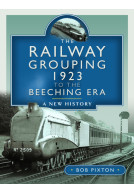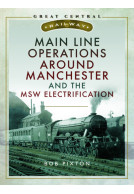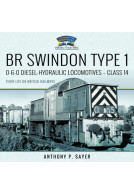Sheffield Main Line Services (Hardback)
From the M S & L R Period to British Railways
Imprint: Pen & Sword Transport
Series: Great Central Railway
Pages: 232
Illustrations: 450 black and white photographs, maps & track diagrams
ISBN: 9781526735997
Published: 13th October 2020
(click here for international delivery rates)
Order within the next 4 hours, 20 minutes to get your order processed the next working day!
Need a currency converter? Check XE.com for live rates
A volume of a new and exciting series illustrating one of the country’s best loved railway companies in the days of steam.It consists of maps, charts, timetables and photographs are used to give the reader a sense of a journey in time along the various lines that the GCR controlled. One main theme is passenger traffic via Penistone, down to Sheffield and east to Retford.
The movement of coal is another of the dominant themes in South Yorkshire centred on Wath marshalling yard, wagons went west, up the notorious Worsborough incline to Penistone and then via the Woodhead tunnel, Mottram Yard to Godley on their journey enroute for Liverpool and Manchester. Another stream of wagons was east passing, the mecca for all GC enthusiast, Mexborough, and onto the Doncaster avoiding line then east to cross the River Trent at Keadby. Lines from the ‘Coal Capital’ of South Yorkshire, Barnsley to Sheffield, Wakefield and Penistone are looked at.
With the trilogy written by G. Dow’s approaching its 60th birthday, it is timely that an illustrated history has been produced to bring to life some of the hidden recesses of this great company.
With Bob Pixton at the helm, you can be pretty sure of a good railway book, and this one does not disappoint. Following the same format as his earlier work on the GCR’s jointly owned lines around Manchester, the present title is predominantly a photographic survey, with informative and often lengthy captions all set in context by extracts from large-scale historic Ordnance Survey maps of the sites covered.
West Somerset Railway Association
The book is divided geographically into 15 chapters covering locations such as Wath Marshalling Yard, Woodhead Tunnel and Sheffield to Retford. In fact the book strays outside the geographical confines suggested by its title to cover Mottram Marshalling Yard on the other side of the Pennines, as this formed an integral part of the smooth running of freight traffic from the Yorkshire coalfield to customers in the east.
Although there are some views of ancient locos such as a MS&LR 2-4-0 built in 1884 and a number of station views from the early twentieth century, the majority of images are from the LNER and BR periods, and we are really spoiled for choice at the sheer variety on offer. There are, for example, eight pages of views showing freight operations at Wath Marshalling Yard, half a dozen in the vicinity of Sheffield Victoria, and fascinating series on the areas centred on Penistone and Worksop. Loco views range from the many eight-coupled types associated with heavy freight haulage, ex-GCR 4-4-0s, attractive passenger tank classes and the humble shunter. Even the unique LNER W1 class 4-6-4 gets a look in on a down express at Retford.
Once again with this series, historians and modellers will not be disappointed by the opportunity to see so many views of station buildings, signal boxes and other lineside features which have almost invariably vanished without trace. The picture coverage originates with many different collections, and the author has clearly been able to access the work of some very competent photographers to illustrate his work.
A lot of thought and preparation has gone into this book, and both the author and publisher are to be congratulated on a most impressive work.
A good historical record of the Great Central centred on Sheffield.
Rail Advert
Read the Full Review Here
Featured in the
Journal of the Railway & Canal Historical Society
The book by Bob Pixton, illustrates one of the Railway Companies in days of steam. It consists of maps, charts, timetables and photographs (some undated) along the routes which were controlled by the Great Central Railway.
Doncaster Family History Society
One theme is the passenger traffic via Penistone down to Sheffield and east to Retford. The other was the movement of coal centred on Wath Marshalling Yard via Worsborough incline to Penistone, then via Woodhead tunnel to Mottram and Godley Yards, thence forward to Manchester and Liverpool.
Another stream of wagons passing east through Mexborough and Doncaster avoiding line to Keadby Power Station and Scunthorpe Steel Works. The lines from Barnsley to Sheffield, Wakefield and Penistone are also looked at.
Acknowledgement mentioned of George Dow’s 1959 trilogy about the Manchester, Sheffield and Lincoln Railway, and other sources, including Dave Fordham of Doncaster for his work of homes and the Yorkshire Coalfield - all have been a wonderful source of information.
The book aims to set the railways within the industrial context of the area, and is a better than average photo history.
Roger Backhouse
Recommended in the strongest possible terms.
The Railway magazine, February 2021
About Bob Pixton
Bob Pixton is a retired teacher who lives in Swindon in Wiltshire, he was originally from the Manchester area and has always had an interest in the railways of Lancashire and Yorkshire.
He has been researching and collecting material about the lines that ran across the Pennines for many years, with a view to writing a series of books about the railways that criss crossed this once heavily industrialised part of Britain.
The author is also a railway modeller with an interest in constructing layouts, which have a slant towards freight operation, producing a miniature copy of his favourite areas of railway research, railways that serve industry.
Main Line Operations Around Manchester and the MSW Electrification (Hardback)
This book illustrates one of the country’s best loved railway companies in the days of steam. Maps, charts, timetables and photographs are used to give the reader a sense of a journey from the compact terminus in Manchester to Godley, the limits of the system, at first opening. The reader is transported back to the original London Road station, using maps, and is walked through the small station to notice the variety of engines, signals and trains that operated there. Gorton, the company’s shed and locomotive works as well as its across the track rivals of Beyer, Peacock, are studied. The…
By Bob PixtonClick here to buy both titles for £60.00




















